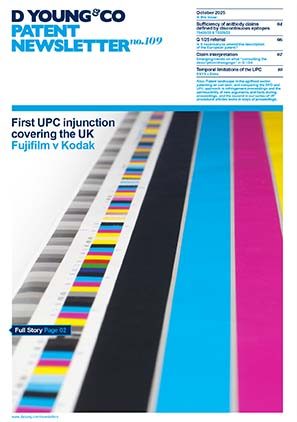Fly net zero 2050
At the 77th Annual General Meeting of the International Air Transport Association (IATA) on 04 October 2021, a resolution was passed by the member airlines to commit to achieving net-zero carbon emissions from their operations by 2050.
In 2022, air travel was responsible for 0.8 gigatons of carbon dioxide (CO2) emissions, approximately 2.1% of global CO2 emissions (1).
Despite the downfall in passenger numbers as a result of the COVID pandemic, with the 2022 air travel related CO2 emissions at 85% of pre-pandemic levels, demand for air passenger journeys is expected to return to pre-pandemic levels in 2024 and to exceed 10 billion by 2050 (2). Based on this trajectory, the expected carbon emissions from air travel for the period from when the resolution was passed in 2021 until 2025 is approximately 21.2 gigatons of CO2 (3).
The Fly Net Zero resolution passed by the IATA member airlines bring air transport in line with supporting efforts of the Paris agreement to limit global warming to 1.5°. Fly Net Zero is therefore an ambitious target which will require coordinated efforts across the aviation industry. In the first of a series of articles, this article introduces the key technologies and changes that are being considered.
Energy and new fuels
The conventional kerosene based jet fuel used in aviation has remained substantially unchanged for over 30 years. Changing the type of fuel used in aviation and/or using alternative energy sources presents the largest opportunity for reducing CO2 emissions.
Indeed, 65% of the contribution to achieving net zero is expected to come from the use of sustainable aviation fuel (SAF) alone. SAF is a term used to describe aviation fuels that are derived by non-fossil carbon resources, such as from biomass, waste feedstocks or carbon capture.
Although SAF is largely compatible with current airport infrastructures, nearly all of the SAF available today is referred to as “paraffinic SAF” as it has a different chemical composition, and therefore different properties, to conventional aviation fuel. Paraffinic SAF cannot be directly substituted for conventional aviation fuel without changes to the aircraft’s fuel lines and metering systems, so only a blend of up to 50% SAF to kerosene based fuel is currently certified for use. Equally the global SAF uptake today is low and focused in a few geographic regions, although some countries such as the UK have started legislating mandates for a minimum SAF content in aviation fuel. The global upscaling of the SAF supply chain therefore presents the biggest challenge in order to achieve the expected contribution to achieving net zero from SAF.
Hydrogen presents an opportunity as a carbon-free fuel that could be incorporated either in liquid form as a replacement to conventional kerosene based jet fuel or in fuel cells as an electrical power source.
Liquid hydrogen contains about 2.5 times more energy per kilogram than kerosene and only produces water as a by-product when burnt (4). Due to its lower volumetric density, however, for a given flight the volume of liquid hydrogen required would be around 4 times larger than that of kerosene, despite having a lower mass (5). Hydrogen is also only a liquid at atmospheric pressure below -253°C, so would need to be stored in low temperature and/or pressurised tanks. These challenges therefore mean that liquid hydrogen fuelled aircraft are being investigated as part of a longer term solution, complimenting the short/medium term gains from SAF.
The use of hydrogen in fuel cells, however, is a more mature technology with many electric vehicles already employing such devices. Like with electric vehicles, the combustion (jet) engines on aircraft are replaced by propellers electrically powered by the fuel cells. Although conventional batteries can also be used as an energy source instead of hydrogen fuel cells, the currently available energy densities of batteries limit their application to small (<10 seat) aircraft. Hydrogen fuel cells have a higher energy density than batteries and therefore provide an opportunity for larger fully electric aircraft.
Hydrogen production, on the other hand, is not necessary carbon natural as current hydrogen production is primarily from burning coal or natural gas. Low-carbon source hydrogen, such as from water using renewable energy, only accounts for around 0.1% of current hydrogen supplies (2). Potential aviation demand for hydrogen by 2050 could represent 8-15% of future hydrogen production. Although global hydrogen demand was forecast to increase sevenfold in the same timescale (6), this did not account for direct use of hydrogen in aircraft propulsion, so the global market for hydrogen production may be further augmented in the event of strong aviation uptake. Large-scale clean hydrogen production therefore presents an enormous challenge.
Aircraft technology
Reducing the amount of energy an aircraft requires in flight is being investigated alongside changing an aircraft’s energy source and is expected to account for 13% of contribution to achieving Net Zero. This can be achieved by improvements in aircraft and engine design.
Continuous improvements in aerodynamic and propulsive efficiency have been the backbone of the aviation industry since its inception; the latest generation of jet powered aircraft has just 20% of the fuel burn per seat of the first generation of jet aircraft introduced in the 1960s (7). Whilst developments in areas such as composite materials, additive manufacture and higher bypass-ratio engines are expected to delivery improvements in the short term, the benefits of such evolutionary technological improvements are gradually diminishing over time. Coupled with the rate of growth of air traffic, emission increases traditionally outpace such efficiency gains.
Revolutionary aircraft architectures are therefore being explored to enable an extra step change in efficiency or more than 10% compared to evolutionary technology levels. These new architectures can complement the requirements of the new energy sources discussed above, but present additional challenges such as meeting certification and evacuation requirements, and avoiding or minimising airport and infrastructure changes. Equally, theoretically optimal aircraft architectures often result in wider aircraft cabins with fewer or no windows, so passenger perception and expectations will need to be carefully managed.
Other issues and mitigations
Although less impactful than changes to the aircraft, operational and air traffic control management changes can provide environmental quick wins, such as allowing aircraft to continuously climb and descend between the ground and their cruising altitudes, reducing the need for holding patterns, trajectory optimization that allows aircraft to fly optimum flight profiles, and reducing ground engine running through the use of electric auxiliary engines or electric tow vehicles.
Whilst Fly Net Zero specifically targets CO2 emissions, other emissions from aircraft such as methane and water vapour also contribute to global warming. An additional factor for the aviation industry is that 90% of aircraft emissions occur above 3000ft (8). Not only does this mean that low altitude and ground based operational mitigations will have a limited impact, but high altitude emissions have a greater impact on global warming; indeed CO2 emissions only account for around a third of aviation’s impact on overall climate change. Although methodologies and conclusions differ, studies have found aviation to account for between 3.5-5% of global warming despite only contributing 2-2.5% of annual CO2 emissions (9). As a result, there is growing pressure to reduce short haul flying where greener forms of transport such as high speed rail are available.
Nonetheless, Fly Net Zero 2050 is an ambitious target with numerous evolutionary and revolutionary technologies. Future articles in this series will investigate some of these key technologies and challenges in more detail.
Sources & useful links
- IEA (2023), CO2 Emissions in 2022, Paris: dycip.com/Iea50-co2emissions-2022
- ATAG (2021), Waypoint 2050: dycip.com/waypoint-2050
- IATA (2021), Net Zero carbon 2050 resolution: dycip.com/iata-fly-net-zero-2050
- Y Najjar, “Hydrogen safety: The road toward green technology,” Journal of Hydrogen Energy, vol. 38, pp. 10716-10728, 2013.
- D Verstraete, "The Potential of liquid hydrogen for long range aircraft propulsion", PhD Thesis, Cranfield University, 2009.
- IEA (2020), Clean Energy Innovation, Paris: dycip.com/Iea50-clean-energy-innovation
- IPCC, International Panel on Climate Change “Aviation and the global atmosphere”, Cambridge University Press, 1999: dycip.com/ipcc-aviation-global-atmosphere
- EESI Issue Brief, "The Growth in Greenhouse Gas Emissions from Commercial Aviation" (2019, updated 2022), available at: dycip.com/eesi-greenhouse-gas-growth
- Lee, D. S., Fahey, D. W., Skowron, A., Allen, M. R., Burkhardt, U., Chen, Q., ... & Wilcox, L. J. (2021). The contribution of global aviation to anthropogenic climate forcing from 2000 to 2018. Atmospheric Environment and Klöwer, M., Allen, M. R., Lee, D. S., Proud, S. R., Gallagher, L., & Skowron, A. (2021). Quantifying aviation’s contribution to global warming. Environmental Research Letters.

